"The goal in saddle fitting is to have the greatest amount of contact between the bar of the tree and the horse." - Circle Y Saddlery
With all the varying tree fits, how do I know what my horse needs?
Regular Tree / Semi QH
This mare is 15.3 hands with heavy bone structure,
but she needs a Regular, or semi- Quarter horse, tree
because of the defined wither.
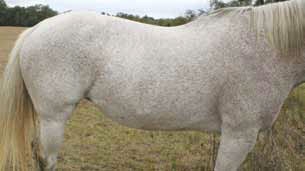
- The average, defined wither will usually fit a Medium/Regular tree. This horse will have a more refined body with definition in the withers-the modern version of Quarter Horses, Tennessee Walking Horses, Thoroughbreds, etc.
- A very prominent, narrow wither may indicate the lack of muscle behind the shoulder blade, and the need for a shoulder bridge pad. The shoulder bridge pad fills in this “hollow” area, allowing the saddle bars to make better contact with the horse.
Quarter Horse Tree
This mare is 15.1 hands and of foundation build with a round,
or mutton, wither and needs a Wide, or full Quarter horse, tree.
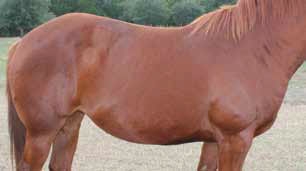
- A more rounded, mutton wither with a flatter back will usually fit a Wide tree. This horse has a blocky build, heavier neck, often referred to as the “foundation” type.
- Draft horses and Draft horse crosses with a very wide, flat back and wither, will usually require a Draft or Extra Wide tree.
- Large muscles behind the scapula can interfere with saddle fit. A wider tree may be needed. Flex trees also work well with this conformation.
Evaluate the Saddle on the Horse
With the saddle positioned correctly-the bars of the tree behind the shoulder blades of the horse-evaluate the following points: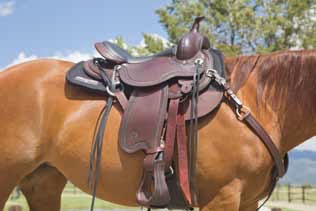
Step back and look at the saddle on the horse’s back. The saddle should be level. If the saddle is not level, you can try adjusting it by using shims, sliding it forward or back to raise or lower the front, or trying different rigging positions. When all else fails, you may need a different saddle with a better fit.
Levelness of Saddle
- If the front of the saddle is high the tree may be too narrow.
- If the front of the saddle is low, the tree may be too wide.
This saddle is too narrow and perched up on this
horse’s withers. Pinching would occur.
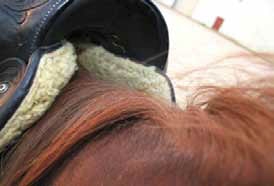
This saddle is too wide with gullet resting on horse’s
withers and tilted downward.
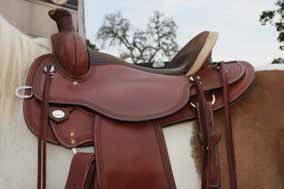
Topline:
- A level topline, wither and croup being about the same height, is ideal.
- Higher haunches, or the horse built “downhill”, can allow the saddle to put more pressure on the withers and may require a pad that is built up in the wither area.
- A swayback causes “bridging” of the saddle. The bars only make contact in the front and rear of the saddle, putting excess pressure or rubbing the withers and loins. It can be seen in older horses, and poorly conditioned horses, and is a common saddle fitting problem. It can be remedied with the use of a bridge pad.
- A horse with a short back will require a saddle with short bars/skirts.
Proper Saddle Placement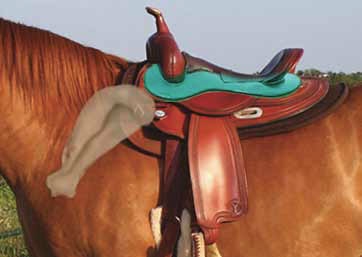
Bars of the tree should settle behind the horse’s scapula.
This is important as a saddle will travel back/forward to settle into this sweet spot.
